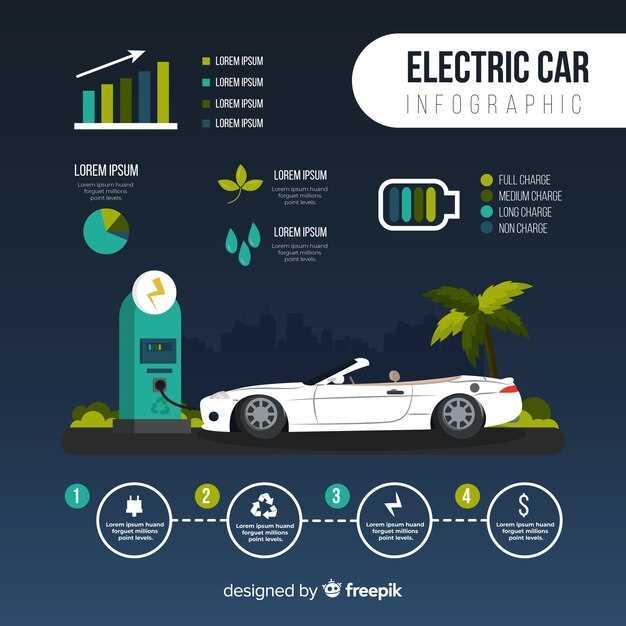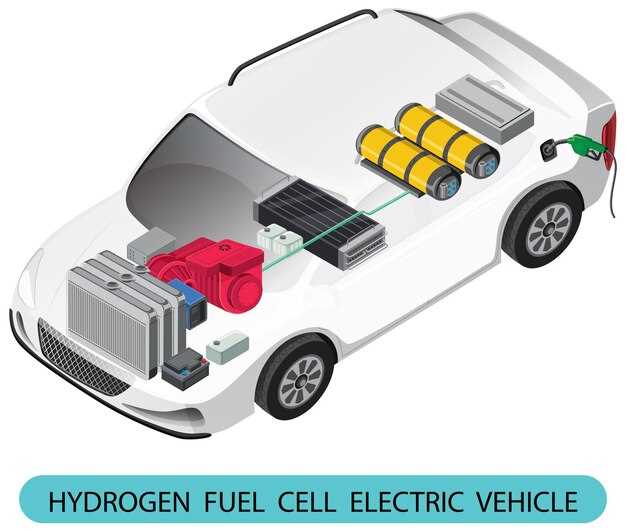How Hybrid Car Weight Affects Performance

In today’s rapidly evolving automotive landscape, hybrid vehicles have emerged as a significant player in the quest for fuel efficiency and reduced emissions. One of the critical aspects affecting the performance of these cars is their weight. As hybrid technology continues to advance, manufacturers strive to balance the need for lightweight materials with the necessity of integrating complex systems such as batteries and electric motors.
Performance metrics, including acceleration, handling, and fuel efficiency, are intricately linked to the weight of the vehicle. Typically, hybrids are heavier than their conventional counterparts due to the additional components required for their dual propulsion systems. This added weight can lead to trade-offs that impact overall performance. An examination of how weight influences these metrics is essential for understanding the capabilities and limitations of hybrid vehicles.
Moreover, the distribution of weight and its effect on dynamic performance cannot be overlooked. A well-balanced hybrid with strategically placed weight can enhance handling characteristics, while poorly distributed weight may lead to diminished control and increased wear on components. As such, the relationship between weight and performance becomes a focal point for engineers as they design the next generation of hybrid vehicles.
In this article, we will explore the profound effects of hybrid car weight on various performance metrics, analyzing how manufacturers can optimize design to achieve a harmonious balance between efficiency, safety, and driving enjoyment.
Influence of Weight on Acceleration Metrics in Hybrid Vehicles
The weight of hybrid vehicles plays a significant role in determining their acceleration performance. Heavier vehicles generally require more power to achieve the same level of acceleration as lighter counterparts. This relationship is primarily due to Newton’s second law of motion, which states that force equals mass times acceleration (F=ma). As the mass of the vehicle increases, the amount of force needed to accelerate it also increases, leading to longer acceleration times.
Moreover, the distribution of weight within a hybrid vehicle can influence acceleration metrics. A vehicle with a balanced weight distribution may handle acceleration phases more effectively, improving traction and stability. Conversely, an uneven weight distribution can lead to performance issues, such as wheel spin or difficulty in maintaining straight-line acceleration.
Manufacturers often strive to optimize the weight of hybrid vehicles by using lightweight materials such as aluminum and carbon fiber, which can help offset some of the additional mass associated with hybrid components like batteries and electric motors. Reducing overall vehicle weight can result in improved acceleration metrics, enhancing the driving experience and fuel efficiency.
In summary, the inherent weight of hybrid vehicles has a direct correlation with their acceleration performance. Balancing weight optimization while incorporating the necessary hybrid technology is crucial for manufacturers aiming to achieve competitive acceleration metrics in the hybrid vehicle market.
How Weight Affects Fuel Efficiency in Hybrid Cars

The weight of a hybrid car plays a crucial role in determining its fuel efficiency. Heavier vehicles require more energy to accelerate, which in turn demands higher fuel consumption. This is particularly significant in hybrid cars, which rely on a combination of internal combustion engines and electric motors. The additional weight from batteries and electric components can offset some of the efficiency gains achieved through regenerative braking.
To quantify the impact of weight on fuel efficiency, various studies have illustrated that for every 100 pounds increase in vehicle weight, fuel economy can decrease by approximately 1-2%. This decrement in efficiency is attributed to the increased rolling resistance, aerodynamic drag, and energy needed for acceleration. Thus, lightweight materials such as aluminum and high-strength steel are increasingly used in hybrid car manufacturing to enhance performance without compromising structural integrity.
Moreover, the design of hybrid vehicles often aims to optimize weight distribution. A balanced weight across the vehicle aids in maintaining stability and control, especially during acceleration and braking. When weight is concentrated on one side, it can lead to inefficiencies, impacting fuel consumption negatively. Therefore, achieving an optimal weight configuration is essential for maximizing both performance and efficiency.
Furthermore, heavier hybrid models tend to rely more on the gasoline engine at higher accelerations, reducing the potential benefits of electric propulsion. Lightening the car can switch the balance more towards electric drive, promoting better fuel efficiency during city driving and stop-and-go conditions where hybrids typically excel. Consequently, the trend in hybrid vehicle design focuses on minimizing unnecessary weight while still providing a robust and functional platform.
In conclusion, the weight of hybrid cars significantly influences their fuel efficiency. Striking a balance between necessary weight for safety and performance, and minimizing excess weight is vital for optimizing fuel consumption. Future advancements in materials and engineering will continue to address this challenge, aiming to enhance the overall efficiency of hybrid vehicles.
Role of Battery Weight in Overall Vehicle Performance
The weight of the battery in a hybrid vehicle significantly influences its overall performance metrics, including acceleration, fuel efficiency, and handling. As the energy storage component, the battery’s weight must be balanced with vehicle design to optimize performance.
A heavier battery can provide more energy capacity, which potentially enhances electric-only driving range. However, increased weight also affects the vehicle’s mass, leading to longer stopping distances and altered acceleration times. This relationship underscores the importance of battery weight in hybrid vehicle design.
| Performance Metric | Effect of Battery Weight |
|---|---|
| Acceleration | Increased weight leads to slower acceleration due to higher inertia. |
| Fuel Efficiency | Heavier batteries may decrease fuel economy as the engine works harder to compensate. |
| Handling | Excess weight can affect weight distribution, leading to less responsive handling. |
| Range | Heavier batteries can store more energy, potentially increasing electric-only range. |
Engineers must find the optimal balance between battery weight and vehicle performance. Advanced materials and designs may mitigate negative effects, allowing for lighter batteries without compromising capacity. Innovations in battery technology focus on reducing weight while maximizing energy density, which plays a critical role in improving hybrid vehicle performance and efficiency.
Impact of Lightweight Materials on Hybrid Car Handling
The incorporation of lightweight materials in hybrid car design plays a crucial role in enhancing handling characteristics. By reducing the overall mass of the vehicle, manufacturers can improve agility, responsiveness, and stability, which are vital for optimal driving performance.
Aluminum and advanced composites, such as carbon fiber, are commonly used to achieve significant weight reduction without sacrificing structural integrity. These materials not only decrease the car’s weight but also help lower the center of gravity. A lower center of gravity enhances cornering ability, as it reduces body roll during turns, allowing drivers to navigate curves with more precision and confidence.
Furthermore, lightweight materials contribute to improved acceleration and braking performance. Reduced mass allows hybrid cars to accelerate more quickly, decreasing the time required to reach desired speeds. Additionally, lighter vehicles can achieve shorter stopping distances, which enhances overall safety and control during braking maneuvers.
Another benefit of using lightweight materials is their impact on the suspension systems. With decreased weight, suspension components can be tuned for better performance. This results in enhanced ride quality and optimized handling dynamics. Suspension setups can respond more quickly to road conditions, improving traction and overall driving stability.
Lastly, the use of lightweight materials positively influences energy efficiency. A lighter hybrid car requires less energy during operation, extending the range and efficiency of the vehicle. This synergy between lightweight design and hybrid technology leads to a more enjoyable driving experience, as drivers can appreciate better performance while also benefiting from lower fuel consumption.
Assessing the Trade-off Between Weight and Cargo Capacity
The balance between weight and cargo capacity is crucial in the design and performance of hybrid cars. As manufacturers strive to improve fuel efficiency and reduce emissions, the weight of the vehicle becomes a significant factor influencing various performance metrics.
Hybrid vehicles typically integrate both a conventional internal combustion engine and an electric motor, which adds complexity and weight to their structure. While heavier cars may benefit from increased stability and safety features, they often face challenges in fuel efficiency. In contrast, lighter vehicles generally offer better acceleration and handling but may compromise on cargo space.
Weight’s Impact on Performance Metrics
The weight of a hybrid car directly affects its energy consumption and driving dynamics. Heavier vehicles require more energy to accelerate, leading to decreased fuel efficiency. Moreover, additional weight can adversely impact braking distance and cornering stability, making it essential for manufacturers to find an optimal weight balance.
Cargo Capacity Considerations
In parallel, cargo capacity is a vital consideration for consumers and manufacturers alike. Vehicles designed for families or commercial use must accommodate larger loads without compromising performance. This requirement often results in engineers facing the dilemma of adding structural reinforcements to support higher cargo limits, which can further increase vehicle weight.
As a result, automotive designers often utilize lightweight materials, such as advanced composites and aluminum, to minimize the weight of hybrid cars while maximizing cargo capacity. These innovations enhance the structural integrity of the vehicle, allowing for greater load-bearing capabilities without significantly impacting the overall weight.
Striking the Right Balance
Ultimately, assessing the trade-off between weight and cargo capacity hinges on the intended use of the vehicle. Urban commuters may favor lighter hybrids for improved fuel efficiency, while those requiring higher cargo space may accept a slight weight increase for practicality. Finding this balance is essential for optimizing performance metrics while meeting consumer demands.
In conclusion, the interplay between weight and cargo capacity is a fundamental challenge in hybrid car development. As technology advances, innovative materials and engineering solutions will help manufacturers navigate this trade-off, ensuring that hybrid vehicles continue to evolve in both performance and utility.
Future Trends in Weight Reduction Technologies for Hybrid Cars
As the automotive industry continues to evolve, weight reduction remains a critical focus for enhancing the performance metrics of hybrid cars. Several innovative technologies are on the horizon that promise to further reduce vehicle weight while maintaining safety, efficiency, and cost-effectiveness.
Here are some key trends in weight reduction technologies for hybrid vehicles:
-
Advanced Materials:
Lightweight materials such as carbon fiber, aluminum alloys, and high-strength steels are gaining traction. These materials offer superior strength-to-weight ratios, allowing manufacturers to develop lighter components without compromising safety.
-
3D Printing:
The use of 3D printing technologies enables the creation of complex geometries and lightweight structures that traditional manufacturing cannot achieve. This approach allows for customization and reduces material waste.
-
Composite Materials:
Integrating various materials to form composites can optimize weight and performance. For instance, combining plastics with fibers helps produce strong yet light components ideal for hybrid car applications.
-
Design Optimization:
Utilizing advanced simulation tools and algorithms allows engineers to optimize the design of vehicle components, ensuring they use the minimum necessary material while still fulfilling performance requirements.
-
Battery Technology Advances:
Improvements in battery chemistry can lead to lighter batteries with higher energy densities. New technologies, such as solid-state batteries, promise to be more efficient and lighter than traditional lithium-ion batteries.
-
Modular Components:
Designing modular components that serve multiple functions can also reduce weight. For example, integrating structural and functional parts into a single unit can decrease overall weight and complexity.
-
Alternative Fuel Sources:
Research into alternative fuels and energy sources can also impact the overall weight of hybrid vehicles. The introduction of hydrogen fuel cells and other technologies may reduce reliance on heavy battery systems.
In conclusion, as hybrid vehicles evolve, the integration of these weight reduction technologies will play a pivotal role in enhancing their performance metrics. By continuously innovating, the automotive industry aims to create lighter, more efficient, and environmentally friendly vehicles that meet the demands of future mobility.

